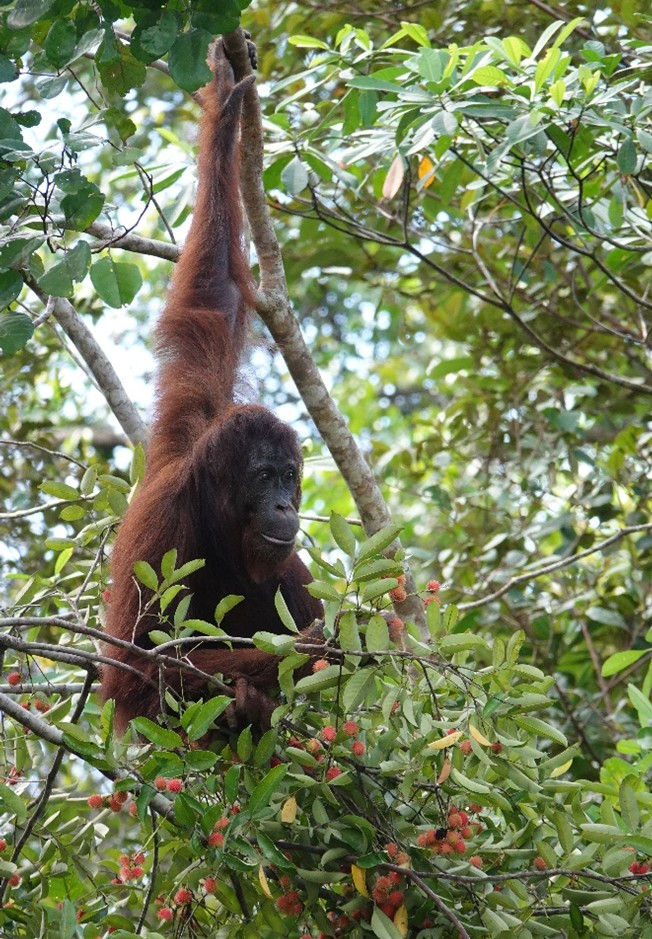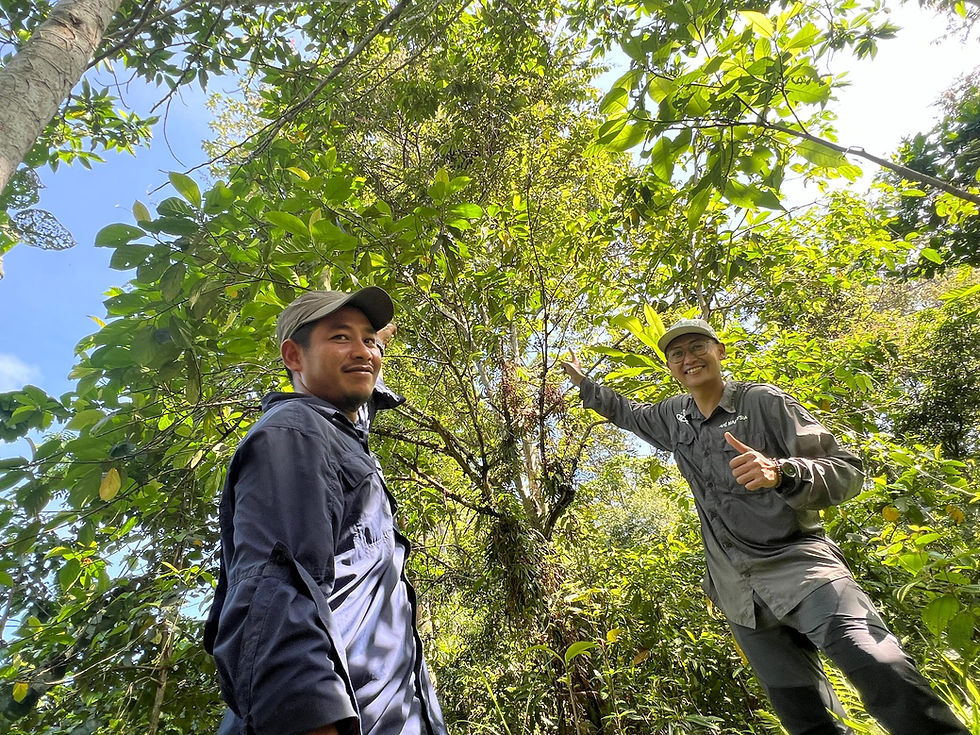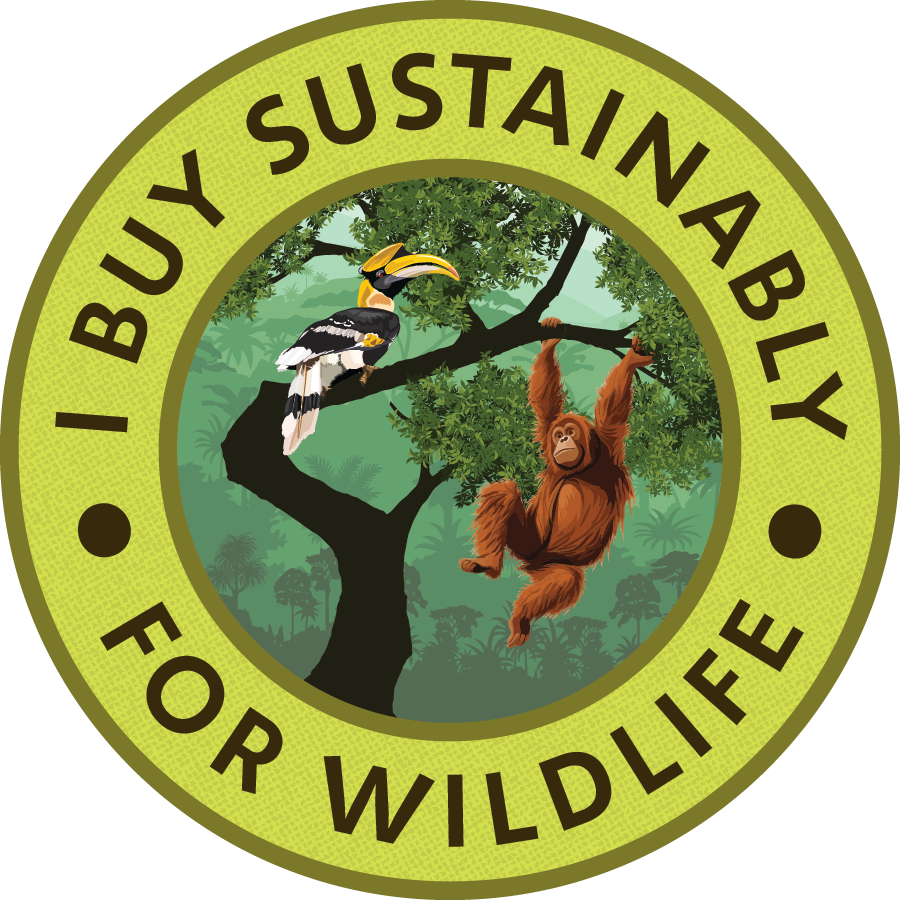Letters from Conservationists: Orangutan Researcher
- azaorangutansafe
- Aug 7
- 3 min read
Letter from Helen Morrogh-Bernard, Orangutan Researcher.
Hello to you all, I am so glad to be able to share my experience working in the field with wild orang-tans with you all. My name is Helen, and I have been working in Borneo for many years. I first when to the Sebangau peat-swamp forest when I was a student. The Sebangau is an amazing place, full of wildlife. It is also very wet as it is a swamp, but it is very beautiful. We discovered that this forest had the largest population of orang-utans in the world. We worked hard to try and get protection for this forest as it was being logged, it is now a national Park, and I am still working there 30 years later. I started a project following the wild orang-utans to see how they lived in a peat-swamp forest. Orang-utans get up very early at 5am and go to bed at around 5pm when it starts to get dark. Once orang-utans allowed me to follow them, we discovered some very cool behaviour. Here are just a few of the interesting behaviours we have observed.

They make a new nest every day by bending branches into a bowl shape, which can support their body weight of between 50-100kg. They like to have a comfortable bed, so they make pillows for their heads and also for their feet, and a blanket when the weather is wet. They do not really like the rain, even though they live in a tropical peat-swamp forest, where it rains a lot, so they make umbrellas out of leaves which they put on their heads to keep them dry. Also, when they make their nests, they make a noise which we think is a communication sound which they learnt from their mothers, which we think may be a sound that tells their baby it is bedtime. One of our most interesting findings is the use of leaves for self-medication. They chew up the leaves, and then rub the foam onto their limbs, this foam acts as an anti-inflammatory. Local people use this same species for medication as well, and we think that the people must have learnt this behaviour from watching orang-utans. We also have one orang-utan who we call Hengky the fire fighter, as he once saw a smouldering mosquito coil which was being used by my assistants. He came down from the tree and put the smoke out and then climbed up the tree again. It is really an honour to be allowed to follow orang-utans and get a glimpse into their world, a world which is gentle. Mothers are very loving and caring parents, and they allow their offspring to share a nest with them until they are about 7 or 8 years old, teaching them how to survive in the forest, and what foods to eat. The males become big flanged males in their twenties or even later, and they make long calls, which is a booming call which can be heard echoing through the forest up to 1 km away. These long calls are only made by flanged males, and it tells the females that he is around if they are interested in a date! It also lets all the other males know that he is the dominant male, so they should keep away. Orang-utans are also called the gardeners of the forest, as they carry seeds from trees and drop them all over the forest allowing new trees to grow, so they are important conservationists!

Little did I know 30 years ago when I first went to the swamp-forests, that I would still be wading around them now. Last week my daughter came with me on a follow, and we followed Icarus, the grandchild of Indah, one of the first female orang-utans I habituated and followed. This was such a treat for me, to see my daughter discovering for herself the magic of the natural world and how important it is to save it. Living in harmony with nature as orang-utans do is such a magical experience, and one I am very lucky to have had. If there is one message to say, it is that by protecting the forests we can protect all the animals that live in them. Having an active research site, is one of the best ways of protecting forests today, because it means there are people there on the ground all the time, and we can monitor any changes in the forest or the animals. The behaviour research site where we have been for 30 years, has helped protect the Sebangau. By funding research projects, helps fund protection. Thank you all for your support, I hope you enjoyed my story!




Comments